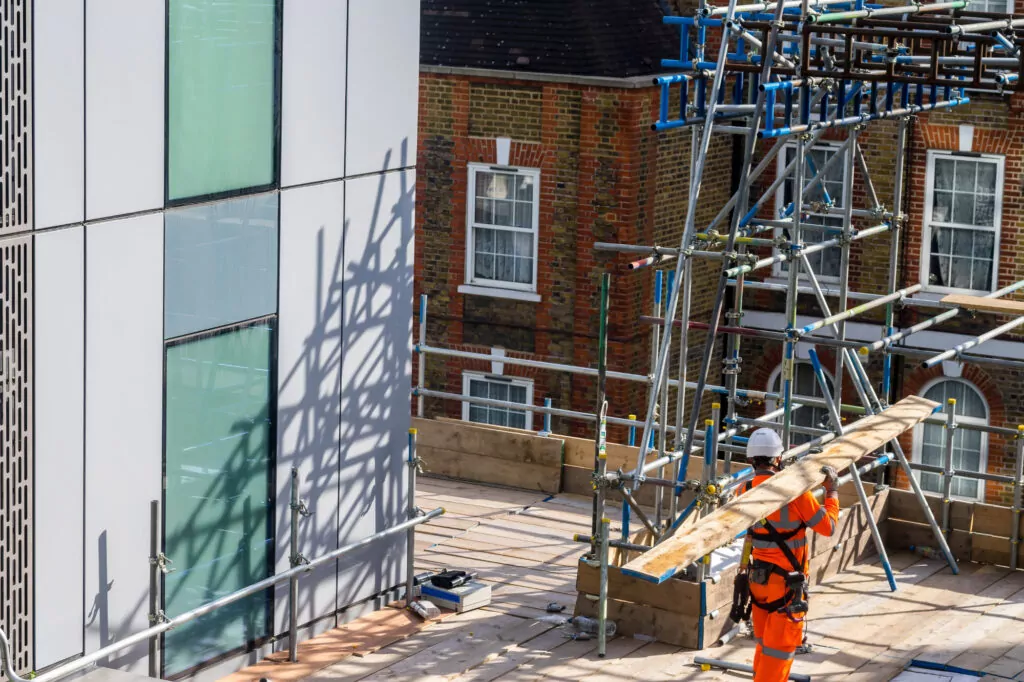
Partner
Head of Energy & Infrastructure | Head of Projects, Infrastructure & Construction | Real Estate
This website will offer limited functionality in this browser. We only support the recent versions of major browsers like Chrome, Firefox, Safari, and Edge.


The Joint Contracts Tribunal (JCT) is updating its suite of standard form construction contracts. The official roll-out began last week with the JCT Design & Build Contract 2024 and JCT Design & Build Sub-Contract 2024 (and accompanying guidance notes), which were both unveiled on 17 April.
A launch event scheduled for 1 May 2024 will provide an overview of the new editions (sign up via the JCT website). The whole suite will be released gradually over the course of 2024 and will include, as a first for the JCT suite of contracts, "target cost" main contract and sub-contract forms.
This article summarises the key updates that we have seen already in the "design and build" forms, which we anticipate will be reflected across the full set of standard forms given that they have historically shared the same DNA.
On the whole, the amendments to the design and build forms are not as extensive as those rolled-out as part of the 2011-to-2016 updates. Instead, the main focus has been taking into account recent developments in case law and legislation, as well as clarifying some of the existing processes to streamline the management of the contracts. The contracts also consider modern market issues (such as ground conditions and change in law risk) and address recent events such as the COVID-19 pandemic.
Even though the changes may appear relatively minor at first glance, it is important that employers, contractors and supply chain members familiarise themselves with the changes and consider how they might impact the delivery of projects under the new design and build form, as use of the 2024 version becomes increasingly common.
The process for extensions of time has been refined to encourage prompt assessment of claims, with the claims assessment period being reduced: from 12 to 8 weeks in the main form and 16 to 10 weeks in the sub-contract form. It is worth noting that the process for loss and expense (“Relevant Matter”) claims remains unchanged from the JCT Design & Build 2016 version (i.e. there is still no express time bar within which the notification of a Relevant Matter is to be submitted, likewise in relation to the submission of the loss and expense estimate).
The list of “Relevant Events” has been updated to cover epidemics (with qualifications), unexploded ordnance, delays due to contamination and asbestos (with qualifications, as part of the previous “antiquities” relief event). The previous “change in law” wording has also been reworked to capture, amongst other things, the publication of new guidance and “statutory powers”.
It is worth noting that what constitutes “contamination/asbestos” and an “epidemic” is not expressly defined and, as such, has potentially broad application. The same point applies to the inclusion of “guidance” in the “change in law” wording, as (on the face of it) it is not restricted to mandatory guidance.
The list of “Relevant Matters” has similarly been updated to include relief provisions for the events noted above: for example, epidemics, contamination, asbestos, unexploded ordnances and the exercise of statutory powers or “change in law” provisions.
Note that each of these new Relevant Matters are optional and parties will need to expressly agree whether they do or do not apply to projects on a case-by-case basis.
The provisions dealing with payment on termination have been reworked to incorporate a more prescriptive and process-driven payment process, along with further clarity as to the entitlement of the parties to payment in these circumstances.
This clarification reflects the Supreme Court decision in the Triple Point Technology Inc v PPT Public Company case. This case clarified that liquidated damages clauses apply up to termination of a contract, and not thereafter. Clear wording must be used if parties wish to agree on a different approach.
The insolvency provisions have been updated to better align them with the requirements of the Corporate Insolvency and Governance Act 2020.
Additional provisions have been incorporated to introduce into the standard form provisions that better align with the new BSA requirements, broadly covering dutyholder requirements, appointments, named parties and the supply of information.
Importantly, the changes do not deal with the position regarding higher-risk buildings, which will need to be considered by parties on a case-by-case basis. Similarly, the terms do not include any express provisions dealing with important issues such as enforcement powers and building liability orders (and the consequences of the same). This reflects the fact that there is no “one size fits all” approach to such matters, so parties will need to continue to ensure that their contracts are tailored to suit projects on a case-by-case basis.
The design and build form includes an express “fitness for purpose” exclusion in relation to the design standard applicable to the works. This reflects current market practice in relation to design, but it should be noted that if parties do require a fitness for purpose standard to apply, the contract will need to be updated to reflect this.
This change will likely also feature in the other updated JCT forms where a contractor has (or may have) design responsibility for the works.
Parties will be able to choose a nominating body or appointer of choice, rather than being limited to the current short list (although the short list will still be maintained.) A previously optional provision (supplemental 10), requiring parties to work collaboratively and negotiate in good faith to resolve issues commercially, is incorporated into the main terms, although (in line with the law) it cannot be used as a precondition to a party referring a matter to adjudication.
The previous schedule dealing with pricing fluctuations has been deleted, as each part of the schedules will now only be available online on the JCT website (capable of being incorporated by reference in the Contract Particulars). Where parties wish to use a JCT fluctuation option, care should be taken to ensure that any intended modifications to the standard schedules are properly incorporated into the contract: critically, this will require amending the document which is incorporated by reference as opposed to amending the contract wording itself.
Please get in touch if you would like to speak to our experts about upgrading to or up-skilling on the new set of JCT contracts. Our experienced team are happy to discuss the important changes and how they can help to improve your business practice and working relationships for the future.